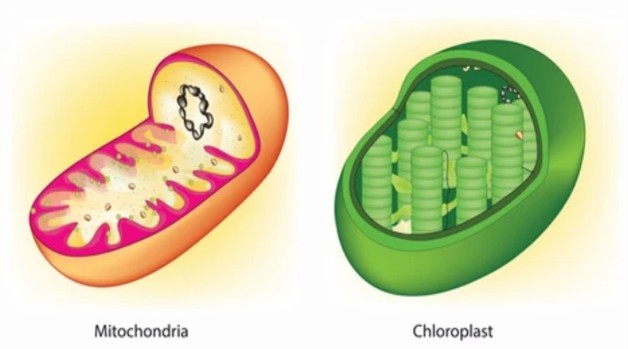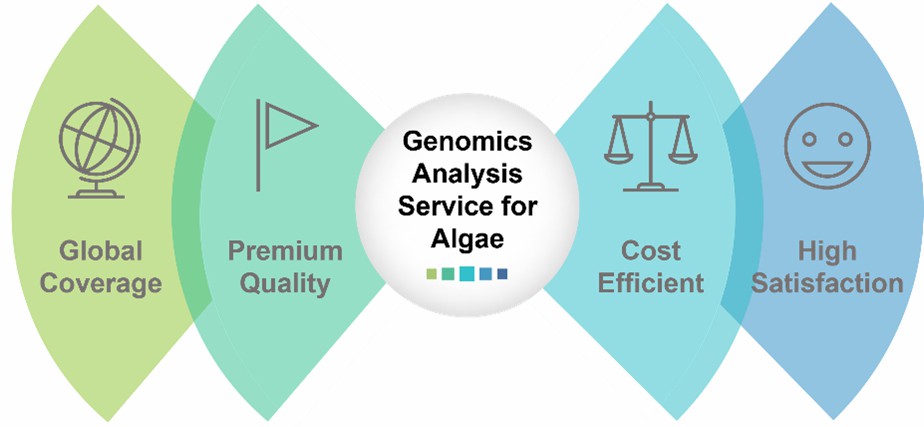Genomics Analysis Service for Algae
With the development of sequencing technology, more and more nuclear genomes as well as organelle genomes of algae are being sequenced, which are effective molecular tools for analyzing gene structure, genome structure, organelle function, and evolution.
Lifeasible has many years of experience in gene and genome sequencing and has a professional technical platform and scientific team to undertake genomics analysis services for algae.
Introduction to Whole Genome Sequence
Whole genome sequencing refers to the determination of the complete DNA sequence of the genome of one organism at once, which includes chromosomal DNA as well as DNA in mitochondria and chloroplasts.

The cpDNA and mtDNA of Algae
The two unique chloroplasts and mitochondria contain unique organelle DNA, called cpDNA and mtDNA respectively, which are characterized by uniparental inheritance and compact genomic structure compared to the nuclear genome. Therefore, they are effective molecular tools for the analysis of gene structure, genome structure, organelle function, and evolution.
Application of Genomics Analysis for Algae
As a result of the rapid development of high-throughput sequencing technologies, genomic analysis has played a key role in revealing the evolution of algae. Mitochondria and chloroplasts are critical for several important metabolic pathways involved in photosynthesis and the energy cycle of algal cells.
 The Origin and Evolution of Algae
The Origin and Evolution of Algae
The algae are derived from proteobacteria and cyanobacteria, respectively, through independent primary endosymbiosis more than a billion years ago, an early stage of eukaryotic evolution. The investigations of endosymbiont host types based on mitochondrial genomes and endosymbiotic types by plastid genomes can further illuminate the evolutionary features of different algae and present more evidence for gene transfer at the endosymbiont level as well as the nuclear and cytoplasmic interactions between endosymbiont and hosts.
 Identify a Wide Variety of Algal Strains
Identify a Wide Variety of Algal Strains
Algae, the oldest living organisms on Earth, include not only prokaryotic Cyanobacteria also known as Cyanophytes in algae but also eukaryotic algae and Charophyta of Plantae. As the most complex group of organisms, algae have shown great diversity during their long evolutionary history. Typically, algae are photosynthetic eukaryotes that live in marine or freshwater environments. To date, a total of 46,177 eukaryotic algae have been identified and classified.
Our Services
The genome holds many secrets of algae. As a professional CRO company, Lifeasible has years of experience and professional equipment to support quality genomics analysis services for algae.

Advanced Sequencing Technologies
Using more accurate and rapid second-generation and third-generation sequencing technologies, Lifeasible offers high-quality, large-scale, and reliable genomics analysis services for algae. It includes the determination of the nuclear, chloroplast, and mitochondrial genes of algae.

Genome Sequence Assembly Approches
Based on the massive amount of data generated by next-generation sequencing, the assembly of genomes is a very complex process. Lifeasible has an experienced team of experts to support the algal genome assembly by the greedy algorithm, overlap layout consensus algorithm, and Euclidean algorithm.
We offer genomics analysis services for algae for algal strain identification, population evolution and phylogenetic studies, metabolic pathway analysis, and prediction of enzyme substitution forms.
Why Choose Us

Lifeasible has been focusing on genome sequencing and genomics analysis for many years and has accumulated a wealth of experience. Consequently, we are capable to provide high-quality genomics analysis services for algae for our clients with experienced scientists and professional equipment. Please contact us for more information.
Our services are for research use only and not for any clinical use.